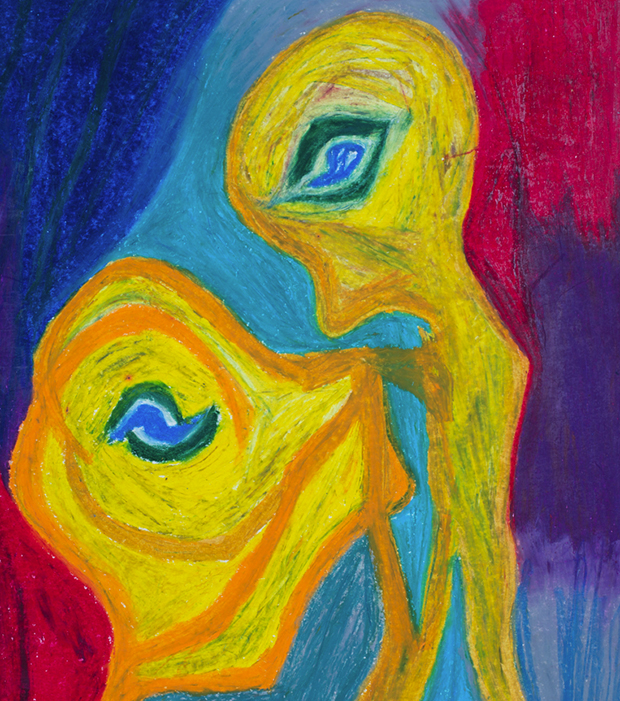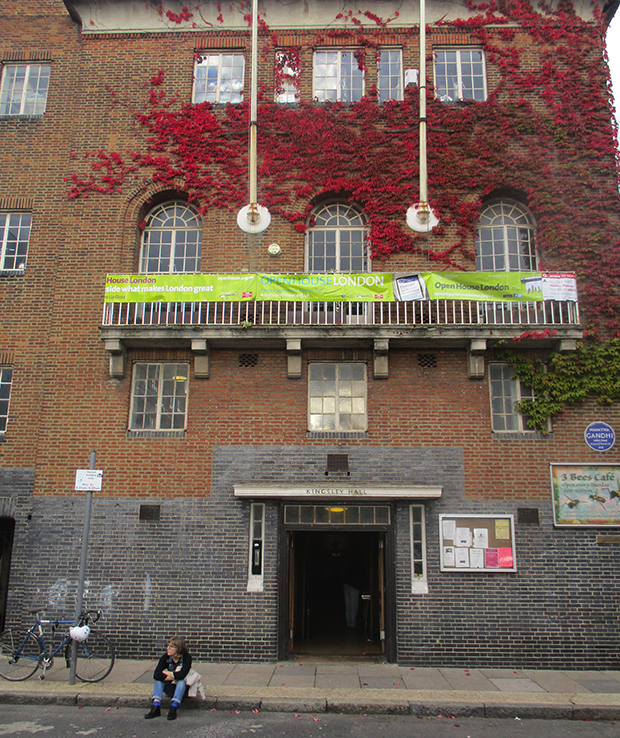
It is 50 years since the Philadelphia Association housed itself at Kingsley Hall in Bow, and 45 years since the Hall closed its doors amid local residents’ discomfort and a sense that things had got out of hand.
For the five years in between, the East End was witness to a radical experiment in treating mental illness, orchestrated by a charismatic group of doctors who eventually attracted the name ‘anti-psychiatrists’ for their rejection of mainstream psychiatric practices, most especially the use of drugs in treatment and the traditional power relationships with patients that characterised the profession.
Doctors and patients lived under the same roof at Kingsley Hall, and were collectively known as ‘residents’. Non-doctor residents were encouraged to make symbolic expressions of their illnesses through art, especially painting, and through talking to doctors in long conversations that respected the way patients used language, and engaged with it on its own terms. In the psychiatric world outside, lobotomies had only recently ceased to be the rage and it was not yet unknown for civil rights activists and feminists to be compulsorily confined to asylums.
The driving force behind the Kingsley Hall institute was the Scottish psychiatrist R. D. Laing. Born into a poor family in Glasgow in 1927, he was successful at school and went on to study medicine, qualifying as a psychiatrist in 1951. Called up to National Service, he served as an army psychiatrist for two years before returning to Glasgow, where he first worked with schizophrenic patients. He developed new approaches to treatment, which laid less of an emphasis on controlling patients and more on doctors and nurses spending time with them.
Having moved to London to study psychoanalysis, he published The Divided Self, an account of his new theories, in 1960. The book presented case studies of some of his patients and argued that mental illness could be seen as the outcome of a struggle between a ‘true’ inner self and a false self presented to the world, and that madness, far from being a medical condition, could be a logical response to the contradictions of the surrounding world. It’s still in print.
“Is love possible?” he asked in a BBC interview. “Is freedom possible? Is the truth possible? Is it possible to be one’s actual self with another human being? Is it possible to be a human being anymore? Is it possible to be a person, do persons even exist?”
Kingsley Hall was to be a place where people could live without these contradictions. The most famous resident was Mary Barnes, a prolific and accomplished painter who developed her artistic career at Kingsley Hall in the sixties and continued to produce work until her death in 2001. With Joseph Berke, her therapist, she produced a book, Two Accounts of a Journey through Madness, and Laing contributed copy to her exhibition catalogues.
“There was a lot of colour there,” says Patrick Marmion, Daily Mail theatre critic and author of a new play opening at the Arcola this month about the closing months of the Kingsley Hall experiment. “Laing styled himself as a Glaswegian street fighter almost, a really colourful, charismatic person who was ferociously bright. And he gathered around him some extraordinary characters,” explains Marmion.

Marmion’s play is set in the Hall’s last crisis days, Laing’s administrative headaches exacerbated by the return of one of his colleagues from “an acid trip to the future” in which he has seen how low the reputations of everyone involved are to sink. Laing became a symbol for a new counter-cultural approach to mental illness throughout the sixties and seventies, and it is as a symbol that his legacy has been judged.
Despite distancing himself from the term, it is he who has become most closely associated with the label ‘anti-psychiatry’, although better candidates might be his colleague David Cooper, who coined it, or Thomas Szasz, the American psychiatrist whose books include The Myth of Mental Illness. Anti-psychiatry has been widely and justly debunked, most forcefully by the left-wing academic Peter Sedgwick in his 1982 book PsychoPolitics, in which he pointed out that the movement’s critique of established mental health services was being used to justify huge cuts to funding. By the eighties, mentally ill patients were at much greater risk of neglect than of over-zealous medical intervention.
However, the symbol of Laing is changing again and being disentangled from anti-psychiatry. He is increasingly celebrated now as an early champion of compassionate treatment for the mentally ill, and also as a poet (his book of dramatic verse Knots was made into a play in 2011, while the half-centenary celebrations have recently seen live performances of his other well known collection Do you love me?). Marmion’s play is in this mode. His favourite Laing quote, which appears in the play, is Laing’s saying that patients were “not objects to be changed but people to be accepted”. The time may have come for us to again accept R. D. Laing.
The Divided Laing is at the Arcola Theatre, 24 Ashwin Street, E8 3DL from 18 November – 12 December. www.arcolatheatre.com

